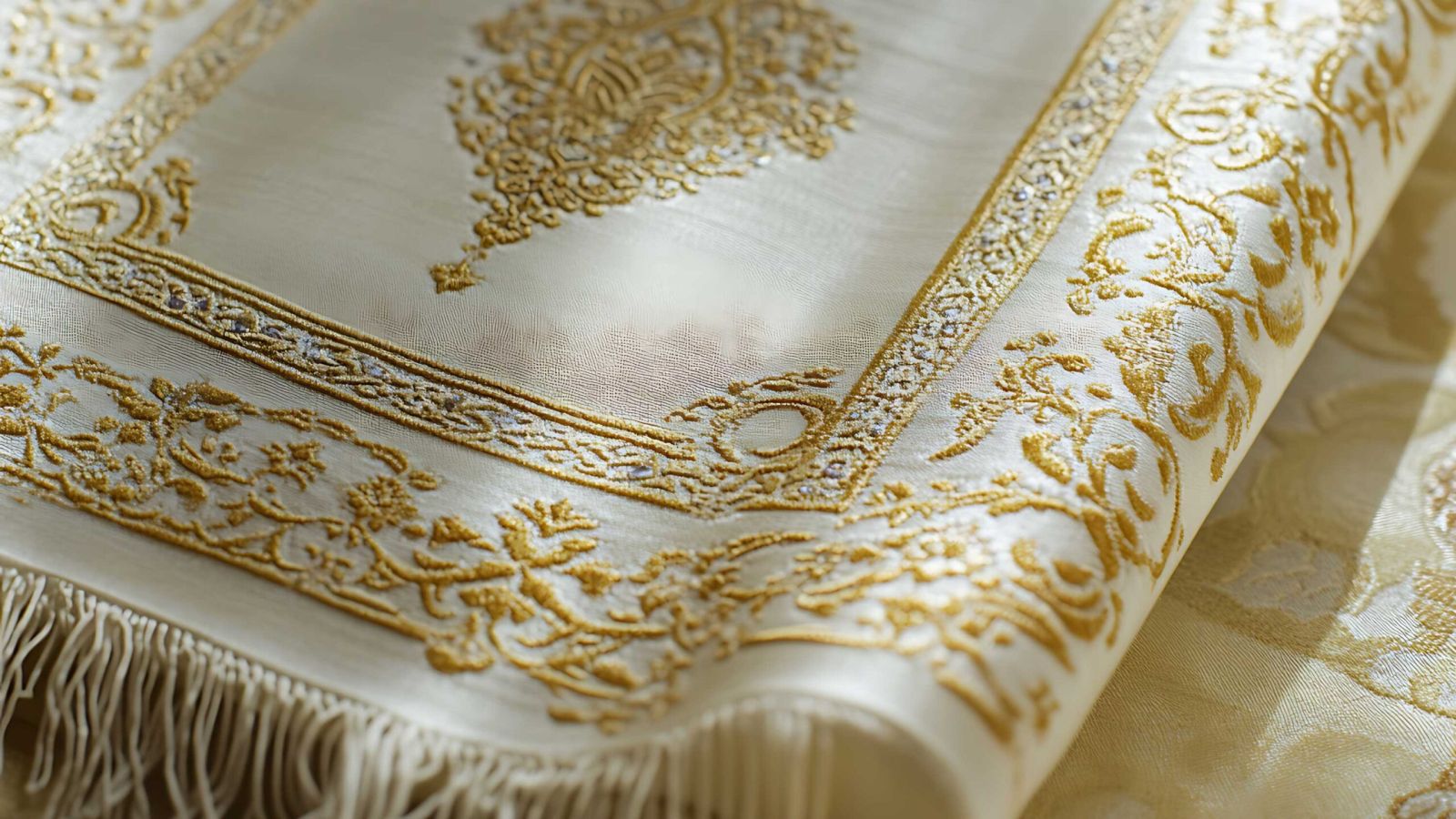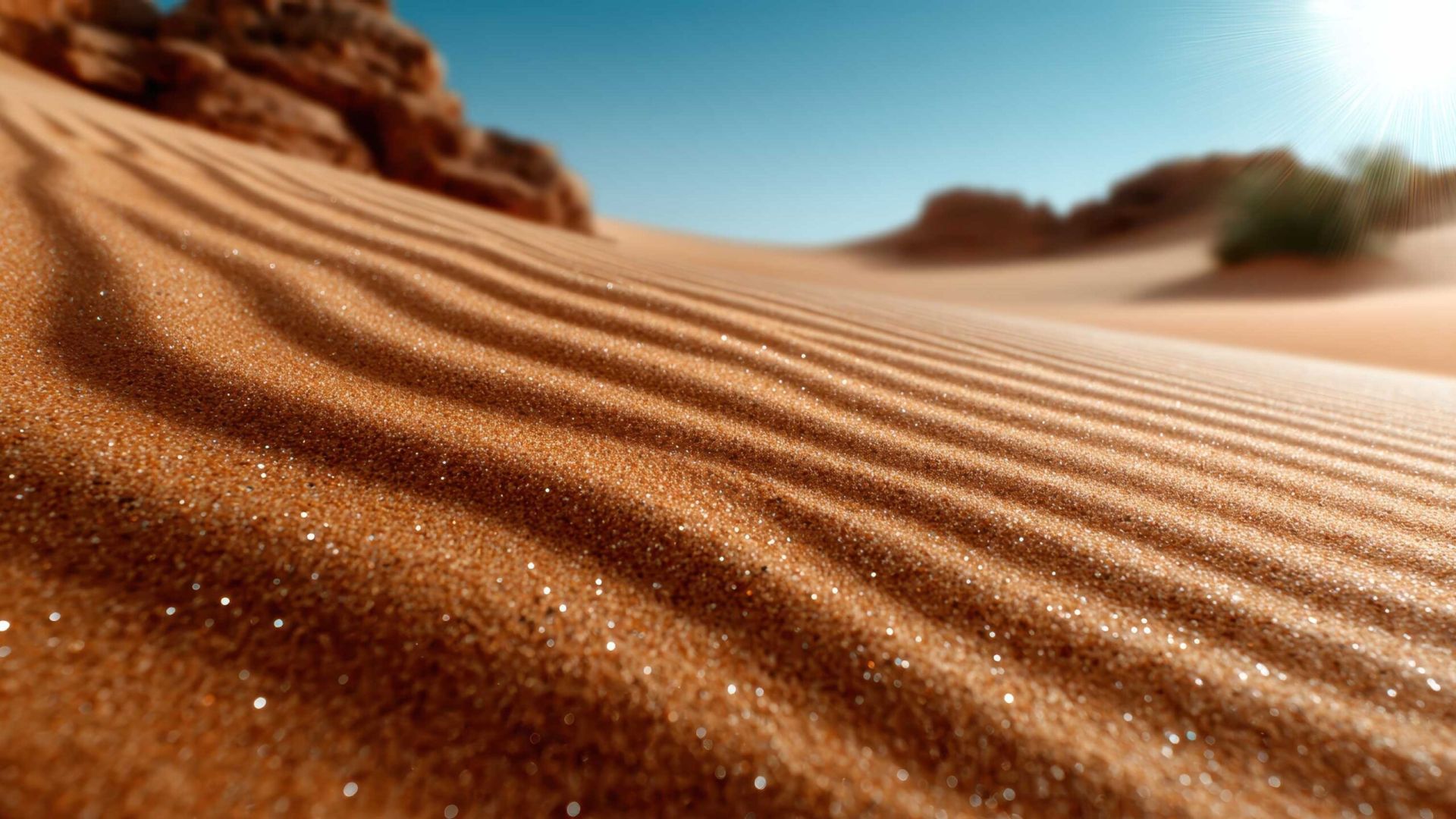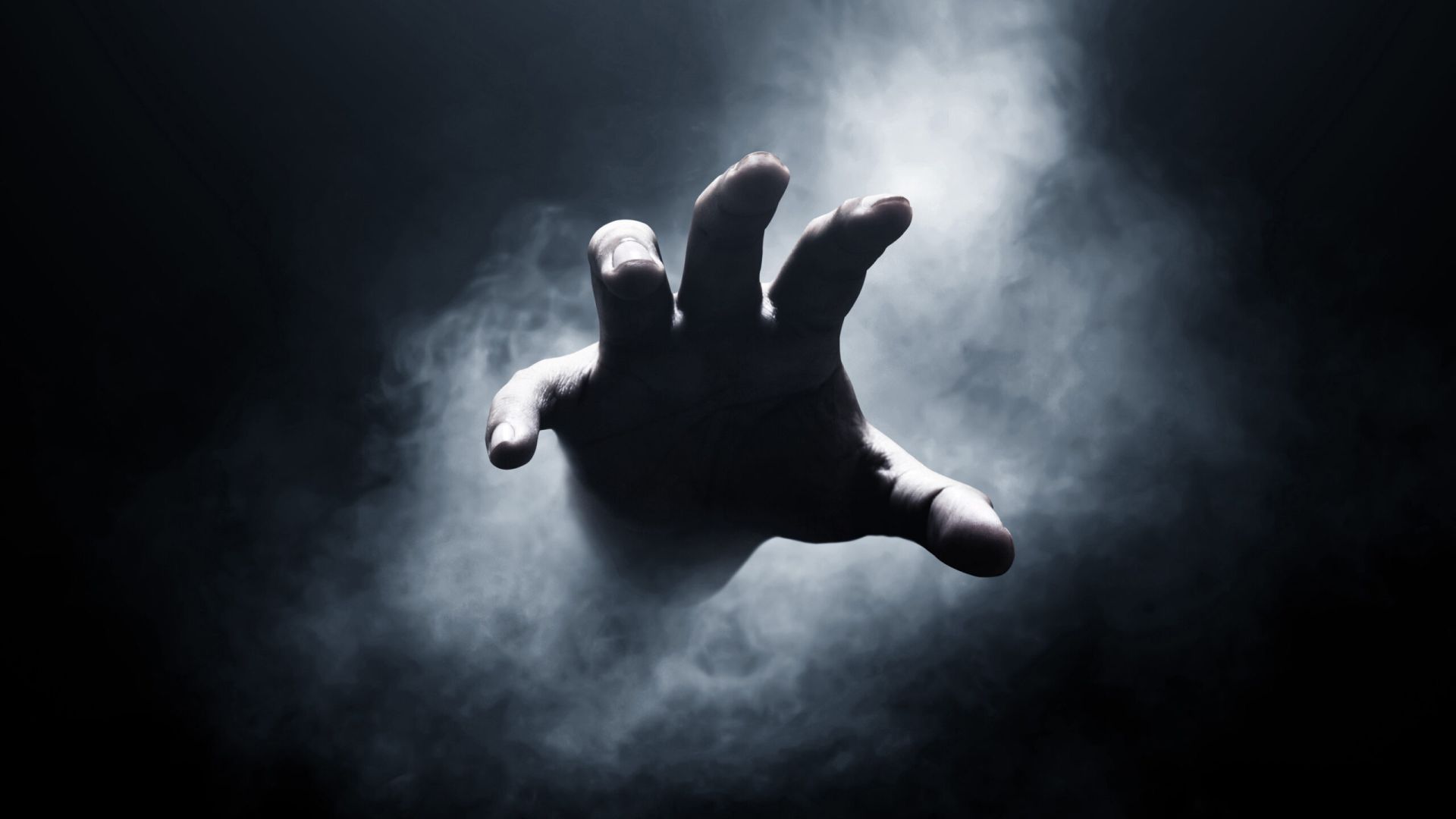Rulings on Praying Towards a Sutrah
Imām Muḥammad ibn Ṣāliḥ al-ʿUthaymīn
Rulings on Praying Towards a Sutrah
Imām Muḥammad ibn Ṣāliḥ al-ʿUthaymīn


Defining Sutrah
It is an object placed before a praying person that acts as a blockade between the place intended for his ṣalāh and the passage of people before him.1
The Wisdom Behind the Practice of Using a Sutrah
The wisdom behind using a sutrah when performing ṣalāh is:
- It acts as a means of maintaining the ṣalāh from deficiencies or complete invalidation by preventing anyone from passing in front of a praying person whilst he is performing ṣalāh.
- It behaves as a means of shielding the gaze of the person performing ṣalāh, especially if the sutrah being used is a bulky, wide object. If this is the case, it will aid the person performing ṣalāh in concentrating and focussing on his ṣalāh as he is prevented from looking elsewhere.
- Using a sutrah when praying represents a form of enacting a command of the Prophet (صلى الله عليه وسلم) and emulating his path of guidance. Any act, however miniscule or trivial, that represents a form of fulfilling the command of Allāh and His Messenger (صلى الله عليه وسلم), or emulating the path of guidance he left behind, should undoubtedly be considered a form of goodness.
The First Opinion: Praying Towards a Sutrah is Recommended (Mustaḥabb)
It is considered Sunnah (mustaḥabb) to set a sutrah in front of oneself when performing ṣalāh. ‘Sunnah’ in this context refers to an action that is deserving of reward when enacted but not deserving of punishment if abandoned. The evidence for this practice being considered Sunnah is that the Prophet (صلى الله عليه وسلم) ordered those performing ṣalāh to set a sutrah before themselves, and he (صلى الله عليه وسلم) also prayed behind one himself. As for his (صلى الله عليه وسلم) commanding it, this was narrated in the ḥadīth: “Anyone among you performing ṣalāh should shield himself with a sutrah, even if it be in the form of an arrow”.2 As for his (صلى الله عليه وسلم) practice, he (صلى الله عليه وسلم) would use an iron-tipped short spear as a sutrah when praying.3
Evidence for The First Opinion: Using a Sutrah is Sunnah
Praying towards a sutrah should not be considered obligatory. For if a person was to pray without one, he would not be considered sinful. This is the opinion of the majority of scholars, as the sutrah is considered an object that perfects and compliments the ṣalāh being performed. This means that one’s ṣalāh is not considered invalid in its absence. It also does not play a role in the actual performance of the ṣalāh itself as it is not needed for one of its movements and, as such, we cannot claim that in its absence the ṣalāh being performed is corrupt or invalid. It is merely an object that facilitates the attainment of perfection in the ṣalāh and is, therefore, not obligatory. Due to the aforementioned, the majority of scholars hold that erecting a sutrah is granted a ruling of recommended (mustaḥabb), falling short of absolute obligation. This ruling is supported by the following:
- The ḥadīth of Abū Saʿīd al-Khudrī (رضي الله عنه): “If a person among you is performing ṣalāh towards that which shields him from the [passing of] people before him, but a person still wishes to pass before him, then the praying person must defend himself from him.”4 This statement begins with the word ‘if’ which proves that the person performing ṣalāh may be praying towards that which shields him or not. The manner in which this ḥadīth is worded, therefore, proves that not all people must pray towards a sutrah. Rather, some people may pray towards one and others may not.
- The ḥadīth of Ibn ʿAbbās (رضي الله عنهما): “I approached the Prophet (صلى الله عليه وسلم) in Miná and saw him leading his companions in ṣalāh without a wall in front of him”.5
- The other ḥadīth of Ibn ʿAbbās (رضي الله عنهما): “The Prophet (صلى الله عليه وسلم) prayed in a wide-open area without anything in front of him”.6 The word ‘anything’ is an encompassing term that is inclusive of any object that could have potentially served as a sutrah. Although the authenticity of this ḥadīth is the subject of criticism, it is supported by other two aforementioned narrations.
- The fundamental state of innocence, that is, nothing is obligatory until explicitly stated as such.
The Second Opinion: Usage of a Sutrah Is Only Required When There is a Clear Need
The Sunnah of praying towards a sutrah is comprehensive of whether a person is travelling or a resident, regardless of whether he fears that someone may attempt to traverse in front of him while he is praying or otherwise. This is because the evidence in this regard is general and does not specifically mention any of these circumstances. Despite this, some scholars have adopted the opinion that if a person is not afraid that someone may pass in front of him while he is performing his ṣalāh, then it is not Sunnah for him to pray towards a sutrah. However, the correct opinion in this issue is that it is Sunnah regardless of whether someone is actually fearful of this or not.
The Third Opinion: Praying Towards a Sutrah Is Obligatory
The third opinion in this issue is that praying towards a sutrah is obligatory because the Prophet (صلى الله عليه وسلم) commanded the one performing ṣalāh to do so. As for the hadīth of Ibn ʿAbbās (رضي الله عنهما): “The Prophet (صلى الله عليه وسلم) prayed in a wide-open area without anything in front of him”, it is weak. The other ḥadīth of Ibn ʿAbbās in which he said “without a wall in front of him” simply negates the presence of a wall but does not negate him praying towards something else erected as a sutrah. As for the ḥadīth of Abū Saʿīd (رضي الله عنه), it proves that a person may or may not pray towards a sutrah. However, there are pieces of evidence that prove that one should pray towards a sutrah.
The Strongest Opinion: The Sutrah is Mustaḥabb (Recommended)
The evidence to support praying towards a sutrah being Sunnah (mustaḥabb)—which is the opinion of the majority of scholars—is stronger and closer to the truth in this issue. This is because the mere fact that the fundamental state of everything is one of innocence is a sufficient form of evidence. Considering this, a ruling of obligation may not be applied to an act which would mandate punishment when that act is abandoned except with evidence. The majority of scholars interpret the statement of Ibn ʿAbbās “without a wall in front of him” to mean that the donkey that he was riding at the time did not pass before him (صلى الله عليه وسلم) [but passed in front of the congregation being led] while he (صلى الله عليه وسلم) was leading the prayer, so he said “without a wall in front of him” that is, I passed before those he was leading but not him despite him not being shielded by anything.
The Sutrah for Those Being Led by an Imām
As for those being led, it is not Sunnah for each of them to pray towards their own sutrah. This is because the companions used to pray behind the Prophet (صلى الله عليه وسلم) and each of them would not adopt their own sutrahs.
The Ruling on Passing Before a Praying Person Who is Being Led by an Imām
[Q]: Is it permissible for one to pass in front of a person who is being led by another in ṣalāh?
[A]: The scholars have two opinions in this issue:
- It is impermissible for one to pass in front of those being led by another. They evidence this stance with the ḥadīth: “If the traverser before the praying person only knew the punishment he is subject to, standing for forty7 would be better than passing before him [i.e., the praying person]”. They interpret this ḥadīth to be encompassing of every praying person. Logically, they evidence this by pointing out that the distraction of the imām and those praying by themselves that results from a person passing in front of them whilst they pray is similarly present for a person being led when a person passes in front of him. For if a great volume of people were to pass before those being led, it may eventually lead to those praying behind the imām feeling as if they are separate from him, the constant traversing of people before them being akin to a wall separating them from their imām. This is especially true for the very large masājid like Masjid al-Ḥarām or Masjid al-Nabawī. In consideration of this, it is impermissible for anyone to pass before a person performing ṣalāh, even if he is being led by another.
- It is permissible for a person to pass before one being led in ṣalāh by another. The evidence of this position is the ḥadīth of Ibn ʿAbbās (رضي الله عنهما) in which he approached the Prophet (صلى الله عليه وسلم) on a female donkey in Miná while he (صلى الله عليه وسلم) was leading his companions. Ibn ʿAbbās (رضي الله عنهما) entered the row, setting his donkey to graze which caused it to pass in front of some of the members of the congregation, although no one objected to this action—not the Prophet (صلى الله عليه وسلم) himself nor any of his companions. This silent approval proves that passing in front of someone being led is excluded from the general principle communicated in the ḥadīth: “If the traverser before the praying person only knew the punishment he is subject to”.
The correct opinion in this issue, therefore, is that a person is not sinful for passing before someone being led by another in ṣalāh. However, if a person manages to find an alternative route that does not necessitate passing in front of someone performing ṣalāh, then taking that alternative route is better. This is because passing before a person whilst they perform ṣalāh—even if they are being led by another—will undoubtedly represent a form of distraction for that person. Complete avoidance of that which distracts those performing ṣalāh is most desirable regardless of whether they are praying by themselves or being led, as the avoidance of anything that detracts from the ṣalāh is a means towards perfecting one’s concentration and attainment of full solemnity during its performance. Just as anyone among you would hate that anyone around you engages in an act that distracts you from your ṣalāh, you should likewise avoid acts that distract others. As the Prophet (صلى الله عليه وسلم) said: “None of you truly believes until he loves for his brother what he loves for himself”.8
Valid Objects that Serve as a Sutrah
As for the objects that may be utilised as a sutrah, it is any weighty object that stands erect like a riding saddle. If such an object cannot be procured, then a person may pray towards a line drawn on the ground in front of him. Although this is more applicable to the floors of the masājid in the past that would be covered with sand and stone, such that if a person drew a line in front of him, it would act as a clear indication of a sutrah.
[Q]: As for the floors of our masājid nowadays, it is carpeted and as such, do the coloured lines woven into these carpets serve the same purpose as those lines that were drawn in the sand and stone of the past?
[A]: Some scholars have taken the opinion that anything that is widely perceived as a sutrah should be considered as such. According to this opinion, these coloured lines sewn into the carpet would serve as a valid sutrah. However, I hold misgivings with regards to this view. It is more apparent to me that these coloured lines are wholly insufficient as sutrahs, except if the ends of the carpet had, for example, thread or strings that stick out or are apparent in some way then these could inadvertently serve the purpose of a sutrah. The evidence of this is the ḥadīth in which the Prophet (صلى الله عليه وسلم) said: “And whoever does not find a sutrah, let him draw a line”.9 Ibn Ḥajar (رحمه الله) graded this ḥadīth Ḥasan, claiming that those who graded it weak like Ibn al-Ṣalāḥ are mistaken.10 Aḥādīth that have been graded Ḥasan may be used as evidence in issues of jurisprudence, as it stipulates one being almost certain that the narration in question is from the Prophet (صلى الله عليه وسلم). In consideration of this, the ḥadīth is a valid piece of evidence in this matter. As such, if a person is unable to procure an erect, weighty object to serve as his sutrah, then he should draw a line instead.
[Q]: How should this line be drawn? As a semi-circle akin to the crescent of the moon, or a straight line like a stick?
[A]: Any variety of line is sufficient for this purpose. As the Prophet (صلى الله عليه وسلم) merely said “let him draw a line”. Therefore any variety of line will serve the purpose of indicating the place of one performing ṣalāh which will be beneficial to him in place of a sutrah.
Endnotes:
[1] Source: Fatāwá Nūr ʿalá al-Darb 8:2.
[2] Weak: narrated by Ibn Khuzaymah: 810 and graded weak by Shaykh al-Albānī in Silsilah al-Aḥādīth al-Ḍaʿīfah: 2760.
[3] Authentic: narrated by al-Bukhārī: 499 and Muslim: 503.
[4] Authentic: narrated by al-Bukhārī: 509 and Muslim: 505.
[5] Authentic: narrated by al-Bukhārī: 493.
[6] Weak: narrated by Imām Aḥmad: 1965 and others. Graded weak by Shaykh al-Albānī in Silsilah al-Aḥādīth al-Ḍaʿīfah: 5814.
[7] Translator note: There is a narration of this ḥadīth with the addition of ‘years’ here taken from the narration of al-Bazzār: 3782, although this addition was graded weak by Shaykh al-Albānī in Silsilah al-Aḥādīth al-Ḍaʿīfah: 6911 and Tamām al-Minnah: 302 in which he mentions that Aḥmad narrated this ḥadīth from Sufyān saying: “To stand for forty—and I do not know whether he meant days, months, or years”.
[8] Authentic: narrated by al-Bukhārī: 13 and Muslim: 45.
[9] Weak: narrated by Abu Dāwūd: 689 and graded weak by Shaykh al-Albānī in Ḍaʿīf al-Jāmiʿ: 569.
[10] Translator note: After clarifying and justifying the weak grade of this ḥadīth, Shaykh al-Albānī said: “In consideration of the aforementioned, we view Ibn Ḥajar’s grade of Ḥasan which he granted to this ḥadith to itself not be ḥasan [suitable, appropriate], especially as a vast group of our predecessors have opposed him in this ruling. Then, Ibn Ḥajar himself narrated that Imām Aḥmad used to say: “The evidence for drawing lines is weak”.” See Ḍaʿīf Abī Dāwūd: 107. Although Shaykh Ibn ʿUthaymīn (رحمه الله) appears to agree with Ibn Ḥajar’s ruling here. And Allāh knows best.
Source: Al-Sharḥ al-Mumtiʿ 3: 274-281
Translated by: Riyāḍ al-Kanadī
Most Popular: Last 30 Days

The Difference Between Ghusl (Ritualistic Shower) to Remove Janābah (impurity) and a Common Shower

The Prohibition of Putting Oneself Ahead of Allāh and His Messenger (ﷺ)









